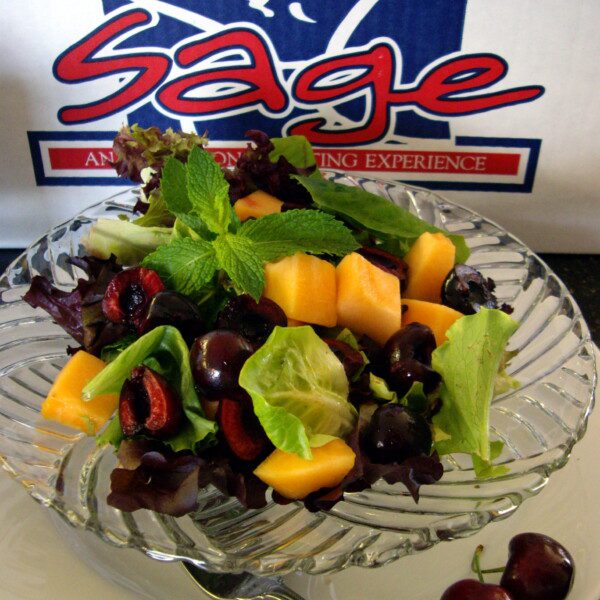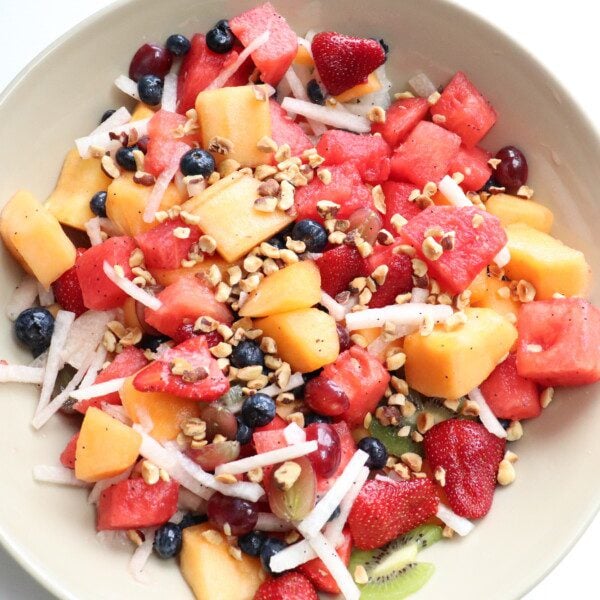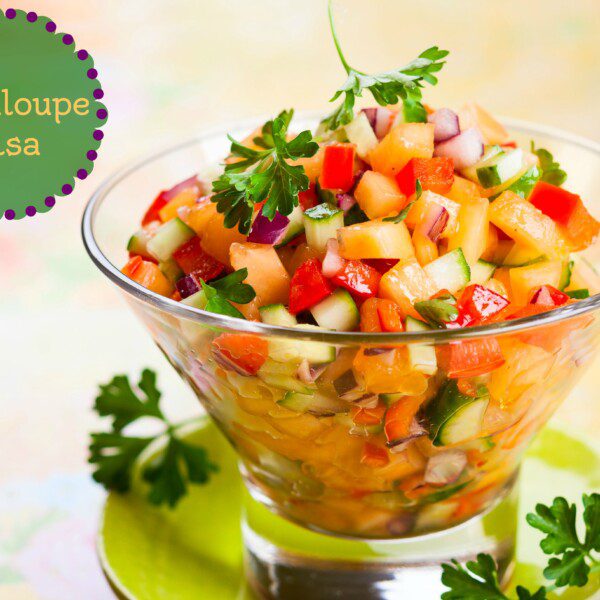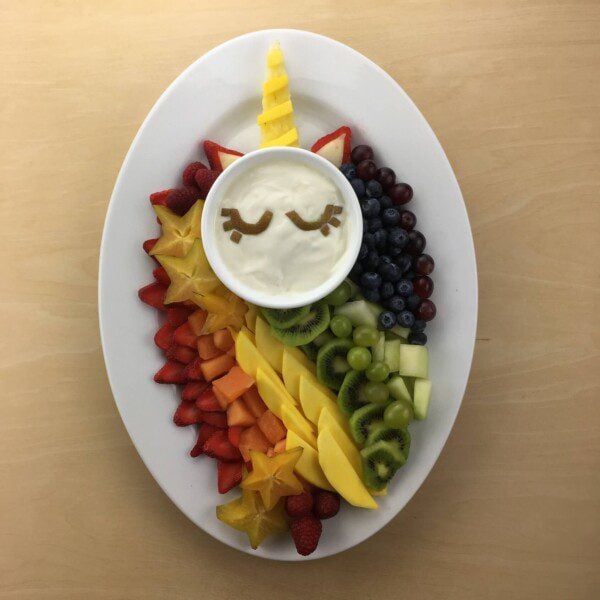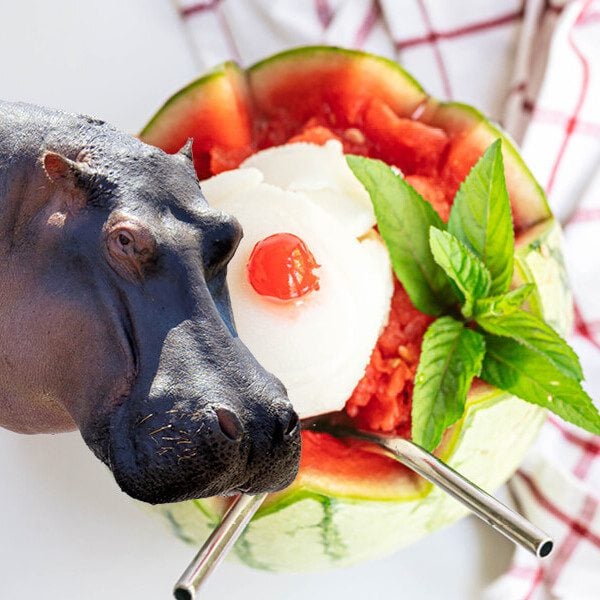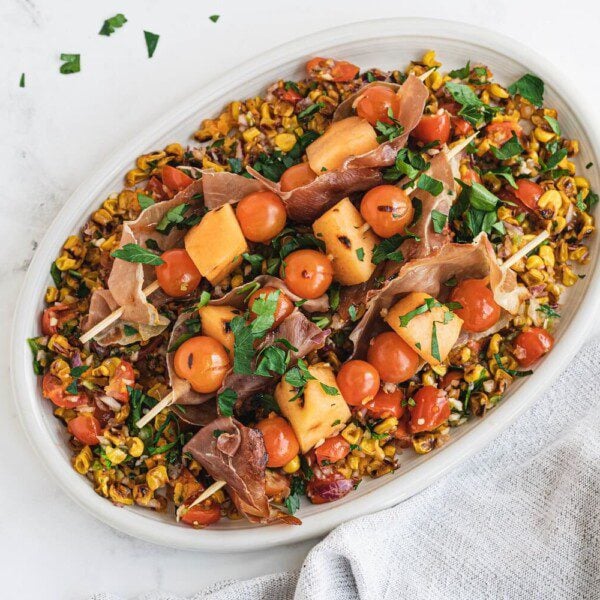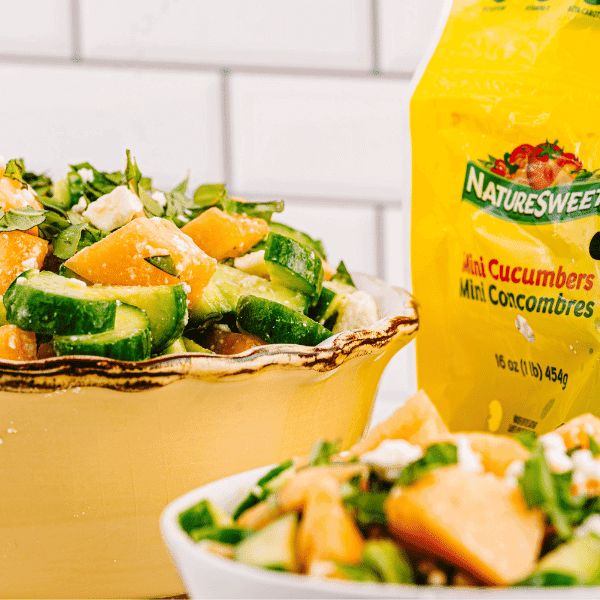How to Select Cantaloupe
- Select a cantaloupe that is beige, gold, or yellow. If you see a smooth yellow patch, that’s where the cantaloupe was resting in the field. Avoid green cantaloupes – these are unripe. Note that cantaloupes stop ripening when picked and will not ripen further on your counter.
- Avoid cantaloupes with any stem attached, as a ripe melon will naturally and cleanly detach from its stem.
- A ripe cantaloupe will be heavy and firm, but not hard. Soft spots may indicate rotting. Choose the heaviest cantaloupes of those you compare.
- Cantaloupes should smell sweet and a little bit musky. Overpowering sweetness or a fermented odor may indicate that the cantaloupe is overripe.
When is Cantaloupe in Season?
Cantaloupe is best in season from June through August. Some grocers may import cantaloupes, where you can get an extended peak season until October. Other stores may carry it through December, but you gotta really love cantaloupe when you don’t buy it during the peak.
Varieties of Cantaloupe
Cantaloupe is grown around the world, and there are wide varieties. We’ll focus on five of the most popular types of cantaloupe that you can find at the grocer or farmer’s market:
- Athena Cantaloupe: The most common cantaloupe you will find in a US grocer. It weighs between 5-6 lbs, has a net-like tan and green skin, and has sweet orange flesh.
- Charentais Cantaloupe: This smaller European cantaloupe is about 2-3 lbs, is oval in shape, and has green striped skin. The cantaloupe’s flesh is bright orange and has a potent sweet flavor.
- Hearts of Gold Cantaloupe: This delicious cantaloupe is harder to find because it is more delicate with a thinner rind and shorter shelf life. Has a similar skin to Athena but has green striping like a basketball. Super sweet flesh, which is excellent for desserts and jams.
- Aphrodite Cantaloupe: A larger cantaloupe, the Aphrodite cantaloupe weighs in at 6-8 lbs. It has a musky, sweet scent and flavor and light tan skin. Very delicious for eating raw.
- Sugar Cube Cantaloupe: A popular variety for its sweet, juicy flavor, the sugar cube cantaloupe is a newer hybrid that is disease resistant. A smaller cantaloupe is excellent for a small group of people.
Cantaloupe Nutrition Facts & Benefits
A nutrient-rich vegetable, brussels sprouts have many health benefits:
Nutritional Facts
Serving size: 1/2 melon
Approximate 93 calories
- 0.5 grams of fat
- 2.3 grams of protein
- 22.5 grams of carbohydrates
- 21.5 grams of natural sugar
- 2.5 grams of fiber
Health Benefits
A few main health benefits of a butternut squash:
- A cantaloupe melon is a significant source of many nutritious vitamins and minerals, such as 337% of Vitamin C, 6% iron, 20% Vitamin B6, 16% magnesium, and 5% calcium.
- Cantaloupe contains the same amount of beta-carotene as carrots, which promotes eye health, the immune system, and red blood cells.
Cantaloupe contains a variety of antioxidants that reduce free radicals, which prevents oxidative stress in the body.
How to Store Cantaloupe
- Cantaloupes can be stored in the refrigerator in your crisper drawer, where they will keep for about 5 days. However, they do not freeze well, so avoid placing cantaloupes in the freezer. Do not keep a cantaloupe on your counter for more than two days.
- Do not cut your cantaloupe until you are ready to serve it. If you must cut it or you don’t use all of it, wrap the remainder tightly in plastic wrap.
How to Prepare Cantaloupe
Cantaloupe is generally eaten raw on its own or tossed in a fruit salad. Here are the easiest ways to cut a cantaloupe for raw consumption:
- Slices: Cut the melon in half. Then Cut the melon from the rind and slice it into thin slices.
- Wedges: Cut the stem off both ends for a firm base. Cut the melon in half, then slice the melon into thick wedges. You can cut the melon wedges from the rind or leave them on the rind.
- Cubes: Cut off the rind. Start with cutting off the stem ends and setting them upright for a firm base. Then carefully slice off the peel in strips, being careful not to remove too much of the flesh. Once the rind is removed, Cut it into cubes.
How to Serve Cantaloupe
Recipes
Hazelnut Fruit Salad
Recipes
Cantaloupe Salsa
Tutorials
How To Make Your Own Fruit Popsicles
Party Trays
Unicorn Fruit Tray
Appetizers
